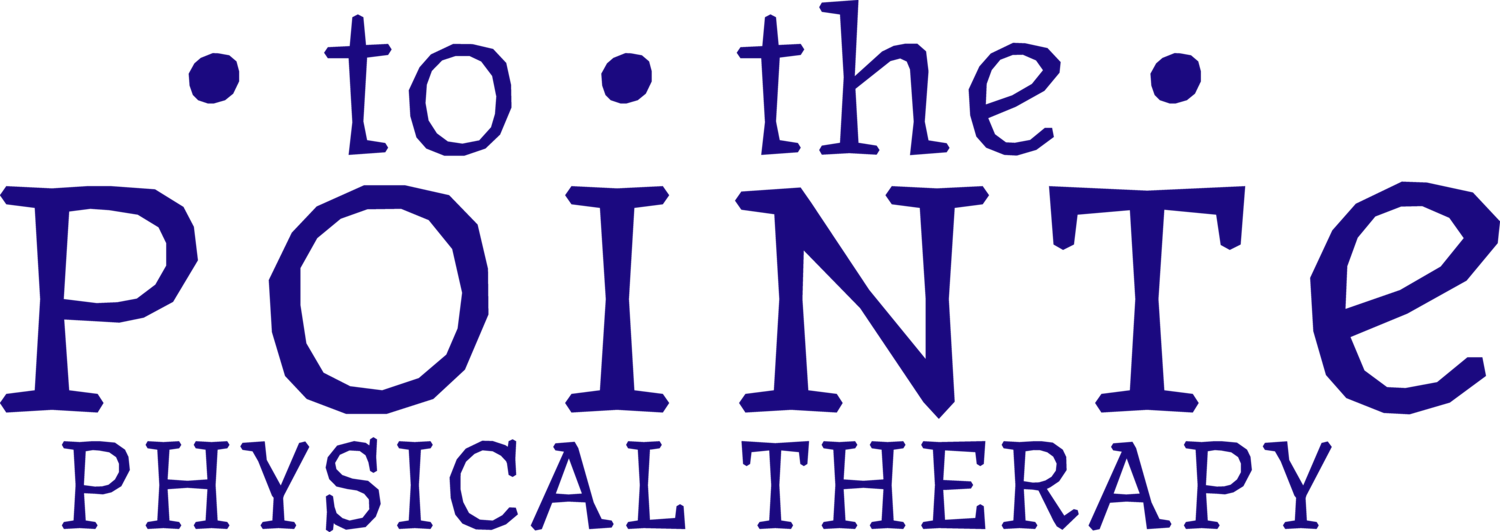What's The Pointe Of Pain? Part Two
Last week in part one I used the example of a sprained ankle to describe how your brain has the ability to change based on the information it receives from your body, and peripheral and central sensitization. You also learned that the degree of pain you are feeling doesn't reflect the severity of injury. Pain and tissue damage don't happen with a 1:1 relationship, and your brain works hard to protect you. I'm so happy you're back to learn the last two important pointes!
Important pointe #3: Pain can only occur once the brain has assessed what the threat signal means, including considering current thoughts and emotions, anxiety, expectations, and past experiences. It is even possible that memories of a previous injury, or anticipation of a future threat alone can be enough to output the perception of pain. This combination of input information that initiates some degree of pain output and then a plan of action (fight/flight/freeze, hormone release, immune system reaction etc.) describes the neuromatrix. Groovy. Now try to hold that idea in mind as your read the next pointe.
Important pointe #4: This is the last concept, and it’s super important for recovery. Have you noticed when you're distracted by awesome things, the pain sucks less? Let me explain. Pain happens when your brain decides that the evidence of danger is greater than the evidence of safety. It's going to consider everything around you, not JUST the signals from the tissues in that sprained ankle. There’s that neuromatrix concept again.
The comedy and tragedy mask image at the top is one we are all familiar with being around theatre, but for our purposes here I want you to think of them as "DIM SIM faces". DIM = Danger In Me, and SIM= Strength In Me. For example: You've sprained your ankle in your last performance and are feeling pain. It feels like it's getting worse by the minute. You've got a chemistry final to cram for, your best friend won't text you back and you don't know why, and you're hungry. Also, it's raining, and you hate the rain. These things have nothing to do with any potential tissue damage at your ankle, but ALL of them can contribute to your pain experience. These are DIMs! Your ankle feels so huge it might burst! Ugh, central sensitization!
But wait. You remember your favorite PT telling you about how it can help to look for the SIMs in your life when you're in pain. You remember her saying that even though the pain might feel horrible, it rarely means the damage is equally horrible! And, as much as you're dreading your chem final, you did do well on the last test, maybe you're not as unprepared as you think. Hey, look! Your friend texted you back, she was just studying for chem as well and had turned her volume down. She asks how you're doing. It feels good when someone shows they care about you. Your mom comes into your room with a sandwich. It's still raining, but this sandwich looks pretty awesome, so you decide to just enjoy the sound of the raindrops while you study. You're sore, but you're safe.
You decide to call your PT after your final to get checked out and make sure you’re on the right track. You have a plan for self-care. You're not noticing pain in your ankle at the same intensity anymore, are you? By looking at your situation with a more positive perspective, you've unlocked "SIM juice" in your brain such as oxytocin, which is a natural hormone that makes you feel good! Your ankle is the same it was 10 minutes ago, but your brain has assessed the situation and you're safe! Your brain loves SIM juice as much as you’re loving that sandwich. You'll have good days and bad days on your road to recovery, but when you feel those DIMs taking over, just remember that your body is strong, and healing, and protecting you, and you have some control over your pain! Stay on the SIM side of life and you’ll be back on your toes in no time.
And because you've made it all the way to the end, I'm going to give you one more amazing fact to impress your friends with. There are over 124,274 MILES of cabling in the brain. Holy neurons! Did that just blow your mind?? Not to worry, much of the brain is replaced every few months.
Look at you, you just read about neuroscience! What else would you like to learn about? Leave a comment below, I welcome your feedback!
Thanks for reading,
Dr. Aimee
References:
Butler, D., Moseley, L., (2013) Explain Pain Second Edition. Adelaide, Australia. Noigroup Publications.
Claus A, MacDonald D. Interpreting Pain Symptoms and How Pain Affects Neuromuscular Control in Dancers. J Dance Med Sci. 2017;21(1):5-12.
Moseley, GL., Butler, D., (2015) Explain Pain Handbook Protectometer. Adelaide, Australia. Noigroup Publications.






